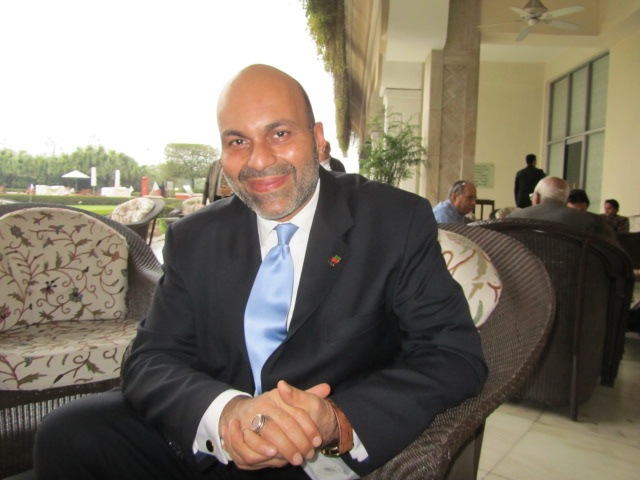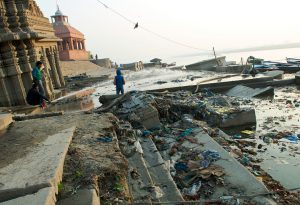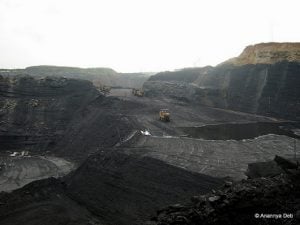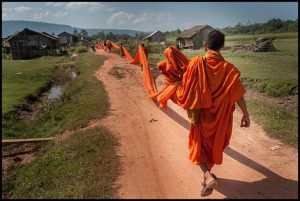Mustafa Zahir returned to a war-ravaged Afghanistan in 2002, after many years of exile. The grandson of the last king of Afghanistan, he is the director general of Afghanistan’s National Environmental Protection Agency (NEPA) and a key figure in the fight to save Afghanistan’s environment.
Afghanistan has suffered more than most countries from what Zahir calls “senseless wars,” and these conflicts have diverted attention from the equally serious impacts of Afghanistan’s environmental problems. Drought, for instance, has created large numbers of environmental refugees, and played its part in impeding Afghanistan’s development, as Mustafa Zahir readily acknowledges.
“We have recorded five major drought disasters in Afghanistan: the first was in 1904; and the fifth one was from 1996 to exactly April 17, 2002. That was the day my grandfather stepped off the aeroplane in Kabul, after 28 years of exile, and it started to rain. People took the rain and the return of the king as signs of hope. Thank God, we haven’t had any droughts since.”
The temporary relief from drought, however, does not mean the absence of a water crisis. Recent snows in the capital, Kabul, have not been enough to recharge the city’s depleted aquifers.
“In a period of 20 years,” Zahir explained, “Afghanistan’s water table has dropped by 12 metres. It’s a hell of a lot. Kabul has seven aquifers and of course any rain, snow or glacial run-off helps, but we are using water in the most unsustainable manner you can imagine. We use flood irrigation, for instance, instead of drip or controlled irrigation; people dig their own deep wells illegally outside the master plan, down to 150 or 200 metres. There are no checks and balances, no controls on these people. Now they are building a huge high-rise complex on one of the last aquifers of Kabul, at Bagrami, towards Jellalabad.”
“There is a strong chance of another drought in the next two or three years, and we must deal with it so that people do not become ecological or environmental refugees. Kabul was built for one million people and now has more than seven million. It is bursting at the seams.”
Zahir has been honoured by the United Nations Environment Programme (UNEP) for his role in helping to found the National Environmental Protection Agency (NEPA), and in writing Afghanistan’s first Environment Law, passed unanimously in 2005. But the lack of enforcement powers, and Afghanistan’s fractious politics, are continuing problems. (Afghanistan has 104 political parties, but they are based on ethnicity or personal or regional loyalties, so few have a national perspective).
“Article 15 of the Constitution of Afghanistan,” he said, is about responsible, sustainable use of natural resources. “I was lucky enough to have played a part in writing article 15, and that is where NEPA gets its life. The Environment Law we wrote is the only law, from 2004 until today that was passed unanimously by both houses of the parliament. The representatives saw their future and the future of their children in the environment. But now enforcement is something that we have a lot of problems with, and when I speak to politicians, it seems as though they don’t know what is going on around them, or they are fooling themselves. If they lose the water, the air they breathe, the food they eat, life will not exist. It is better to take the medicine now than to have surgery later.”
Hydropower could become regional flashpoint
Ravaged by war for decades, Afghanistan has had little opportunity to exploit its rich natural resources, or to develop the energy potential of its trans-boundary rivers. Some of its downstream neighbours are nervous that a peaceful Afghanistan would claim its right to the exploitation of its rivers. Afghanistan sits at the headwaters of several important rivers including theKabul River, which flows in Pakistan, and the Amu Darya, shared with Tajikistan, Uzbekistan and Turkmenistan. For the past 12 years, the Amu Darya has failed to reach the Aral Sea.
“As you know,” said Zahir, “the Aral Sea is an ecological disaster. Sixty-four percent of it has totally dried up, causing ecological refugees and changing a whole way of life. Afghanistan is not an island, so we need close, trans-boundary cooperation. Our two neighbours in the north, Tajikistan and Uzbekistan almost went to war over fresh water.”
“We are harnessing only 1% of the energy of that water and our neighbour Tajikistan is doing much better, using something like 6-7%. They have very good hydroelectric energy programmes with the help of the World Bank, but then they had an infrastructure left over from the former USSR. In Afghanistan, everything was destroyed. When we started, back in 2002, we literally had to start from zero: things were either destroyed by war, or just decay, due to neglect.”
Developing its own hydropower will be important for Afghanistan’s development, but Zahir acknowledges that regional cooperation will be required. “I believe we should sit down and talk with neighbours to the north, Tajikistan, Turkmenistan and Uzbekistan, our neighbour to the south, Pakistan and our neighbour to the west, Iran, and we all must respect one another’s legitimate national interests. I don’t want to say that the Amu Darya is ours. We have a responsibility to our downstream neighbours and we have to share. But we must also protect Afghanistan’s legitimate national interest. “
A mining resource curse?
Afghanistan is also sitting on 2.5 to 3 trillion dollars of lithium and the world’s largest concentration of uranium, as well as rich deposits of copper and other minerals, none of them currently exploited. In November 2007, the China Metallurgical Group (MCC) paid US$ 3 billion for a 30-year lease on the Aynak copper mine, site of the world’s second largest copper deposit.
It was the biggest foreign investment Afghanistan’s history, but production has since stalled, partly because Aynak is also a rich archaeological site. For Zahir, there are dangers in such mineral riches, as well as huge potential.
The Aynak mine is beset by environmental problems, including water scarcity, the volume of coal required to produce 400 megawatts of electricity, and the availability of the phosphate required in the extraction process. With development delayed and copper prices falling, the mine’s future is uncertain.
“Is this a blessing or a curse?” he said. “We have studied the resource curse in Africa, Asia and Latin America very carefully. In Aynak, people are aware of the risks. I said to them, are you thinking of just the next five years? Or do you want your grandchildren to see the river and to breathe clean air? To know that there were once trees and birds? It is my responsibility to persuade them that it is better to have long-term well-being and not a quick hit that will fizzle away. “
His powers, however, are limited: the NEPA is a law making and regulatory body, and although the Environmental Law is second in importance only to the constitution, its implementation is in the hands of other ministries.
“Whether other ministries take it seriously is another question altogether,” said Zahir.
Sustainable development, however, will be key to Afghanistan’s success or failure. “In the sixties, said Zahir, “we were self-sufficient in food; now a country that once the food basket of the region is starving. We eradicated polio in 1964, but now it has come back. We had vibrant markets in Europe and the US, but now 90% of what we use is imported. In 1964, women had the vote here, six years before they got it in Switzerland, and we had three women ministers. I know,” he said, “that we can never have that Afghanistan back, but we have to try. Hope keeps a human being alive.”






